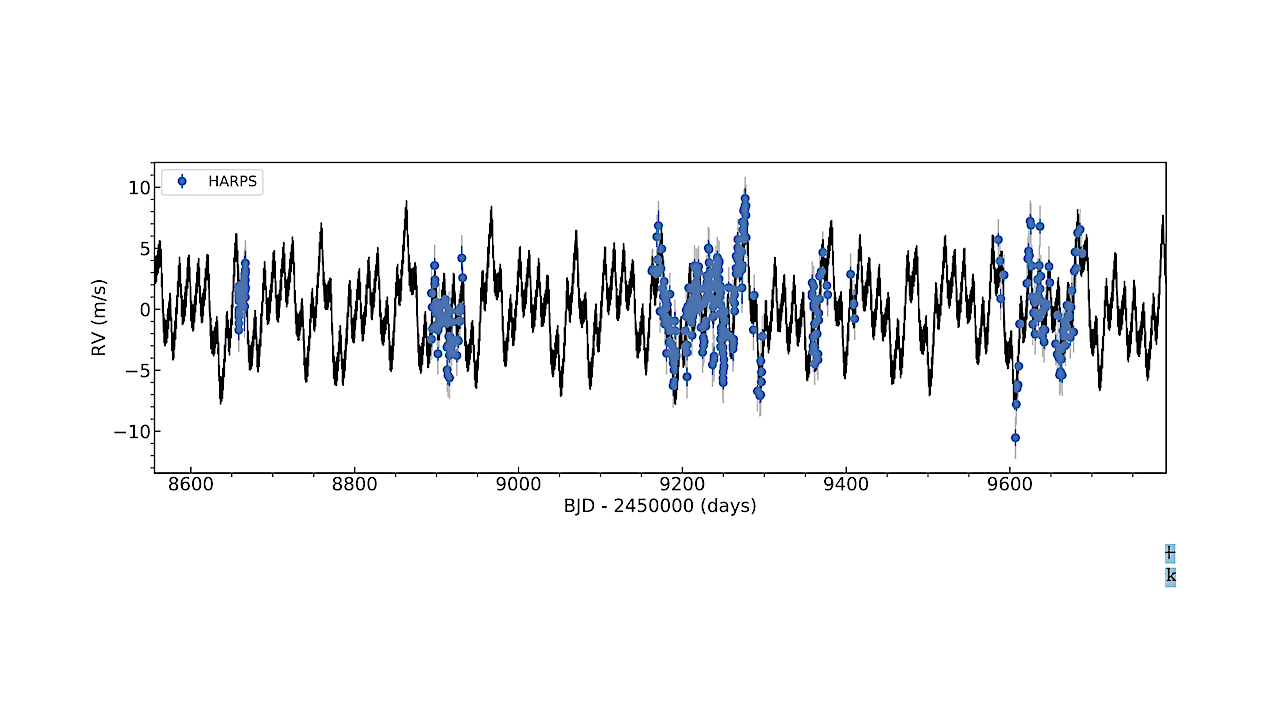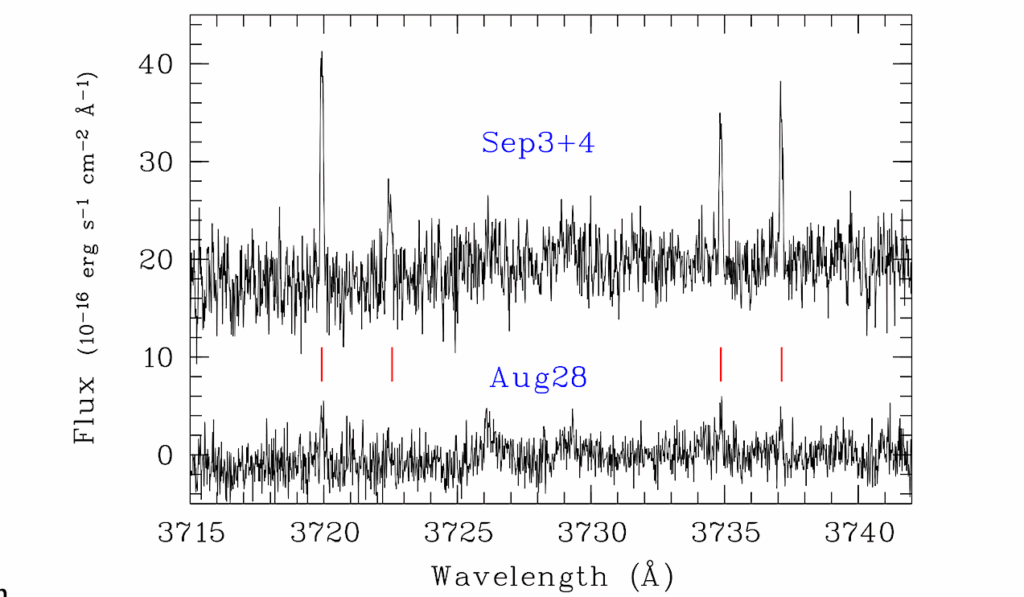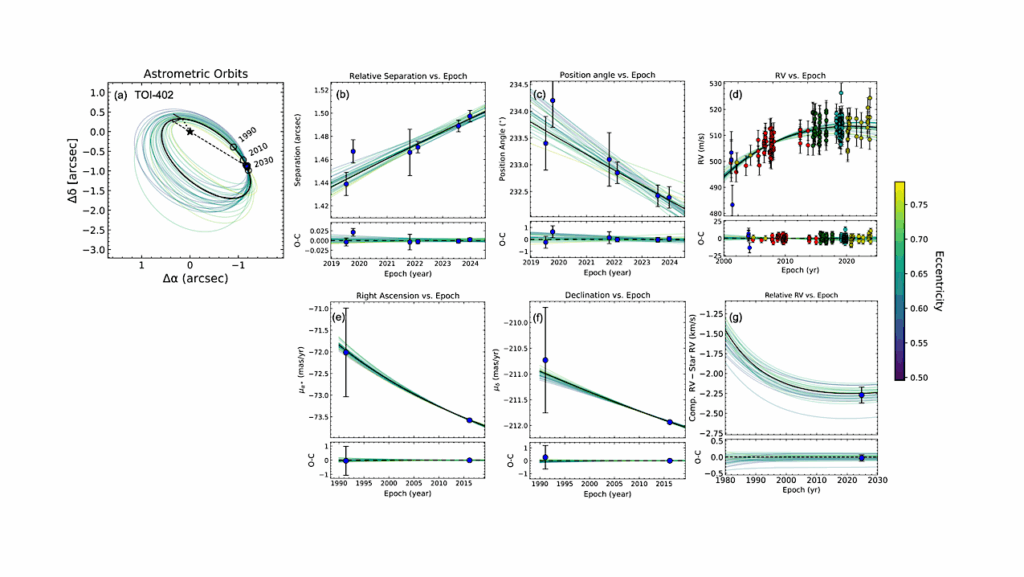Company for the ultra-high density, ultra-short period sub-Earth GJ 367 b: discovery of two additional low-mass planets at 11.5 and 34 days

GJ 367 is a bright (V ≈ 10.2) M1 V star that has been recently found to host a transiting ultra-short period sub-Earth on a 7.7 hr orbit. With the aim of improving the planetary mass and radius and unveiling the inner architecture of the system, we performed an intensive radial velocity follow-up campaign with the HARPS spectrograph — collecting 371 high-precision measurements over a baseline of nearly 3 years — and combined our Doppler measurements with new TESS observations from sectors 35 and 36.
We found that GJ 367 b has a mass of Mb = 0.633 ± 0.050 M⊕ and a radius of Rb = 0.699 ± 0.024 R⊕, corresponding to precisions of 8% and 3.4%, respectively. This implies a planetary bulk density of ρb = 10.2 ± 1.3 g cm−3, i.e., 85% higher than Earth’s density. We revealed the presence of two additional non transiting low-mass companions with orbital periods of ∼11.5 and 34 days and minimum masses of Mcsinic = 4.13 ± 0.36 M⊕ and Mdsinid = 6.03 ± 0.49 M⊕, respectively, which lie close to the 3:1 mean motion commensurability. GJ 367 b joins the small class of high-density planets, namely the class of super-Mercuries, being the densest ultra-short period small planet known to date.
Thanks to our precise mass and radius estimates, we explored the potential internal composition and structure of GJ 367 b, and found that it is expected to have an iron core with a mass fraction of 0.91+0.07−0.23. How this iron core is formed and how such a high density is reached is still not clear, and we discuss the possible pathways of formation of such a small ultra-dense planet.
Elisa Goffo, Davide Gandolfi, Jo Ann Egger, Alexander J. Mustill, Simon H. Albrecht, Teruyuki Hirano, Oleg Kochukhov, Nicola Astudillo-Defru, Oscar Barragan, Luisa M. Serrano, Artie P. Hatzes, Yann Alibert, Eike Guenther, Fei Dai, Kristine W. F. Lam, Szilárd Csizmadia, Alexis M. S. Smith, Luca Fossati, Rafael Luque, Florian Rodler, Mark L. Winther, Jakob L. Rørsted, Javier Alarcon, Xavier Bonfils, William D. Cochran, Hans J. Deeg, Jon M. Jenkins, Judith Korth, John H. Livingston, Annabella Meech, Felipe Murgas, Jaume Orell-Miquel, Hannah L. M. Osborne, Enric Palle, Carina M. Persson, Seth Redfield, George R. Ricker, Sara Seager, Roland Vanderspek, Vincent Van Eylen, Joshua N. Winn
Comments: 28 pages, 11 figures. Accepted for publication in ApJL
Subjects: Earth and Planetary Astrophysics (astro-ph.EP)
Cite as: arXiv:2307.09181 [astro-ph.EP] (or arXiv:2307.09181v1 [astro-ph.EP] for this version)
Submission history
From: Elisa Goffo
[v1] Tue, 18 Jul 2023 11:58:44 UTC (4,588 KB)
https://arxiv.org/abs/2307.09181
Astrobiology,








